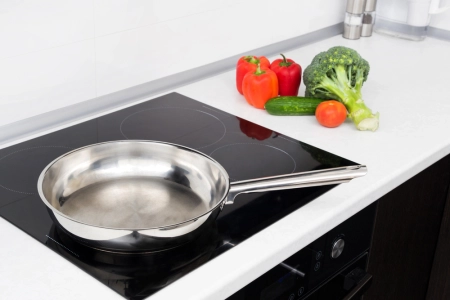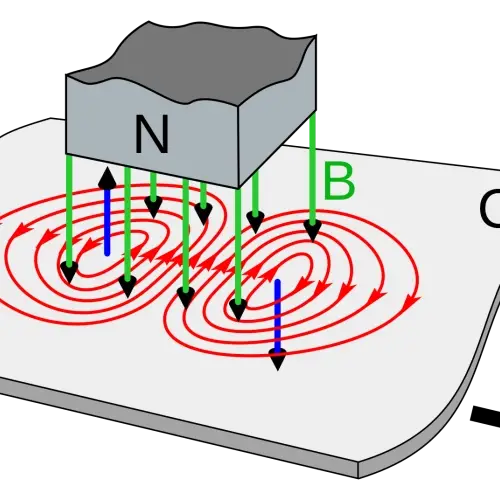
An induction hob is a kitchen appliance that uses magnetic fields to directly heat cookware. It works by using a coil of wire that generates an alternating magnetic field, inducing electric currents in the bottom of ferromagnetic cookware.
Induction hobs represent a significant innovation in energy saving and efficiency, offering a fast and safe way to cook. But how do these hobs manage to heat food without even heating themselves? In this article, we will explain how this type of hob works.
How induction hobs work
Induction hobs have a coil of wire inside them, just below the cooking surface. When you turn on the hob, an alternating electric current (i.e. one that constantly changes direction) passes through this coil.
The alternating current in the coil generates a magnetic field that also changes direction rapidly.
When you place a cookware that is ferromagnetic (such as an iron or stainless steel pot) on the stove, the alternating magnetic field induces an electric current in the bottom of the cookware. This current is called an "eddy current" or "parasitic current."
The induced current in the cookware material generates heat due to the electrical resistance of the metal (the metal opposes the flow of current, and this resistance produces heat). It is similar to what happens in an electric wire that heats up when current passes through it, but in this case, it happens at the bottom of the cookware.
One of the advantages of induction hobs is that they heat the cookware directly, without the need to heat the surface of the hob first. This makes them more efficient than other forms of cooking, as less energy is lost in the process.
Why do they warm up from a physical point of view?
 As we mentioned, the alternating magnetic field induces electric currents at the bottom of the utensil called eddy currents. These currents flow through the conductive material of the utensil and, due to the resistance of the material, generate heat.
As we mentioned, the alternating magnetic field induces electric currents at the bottom of the utensil called eddy currents. These currents flow through the conductive material of the utensil and, due to the resistance of the material, generate heat.
Resistance is a property of materials that measures how much they oppose the flow of electric current. When current flows through the material with resistance, heat is generated (Joule effect). This heat is what cooks food.
Energy efficiency
Induction cooktops are known for their high energy efficiency compared to alternatives such as gas stoves and conventional electric cooktops. The efficiency of an induction cooktop is due to its ability to directly transfer heat to the cookware, minimising energy loss.
In contrast, gas stoves and electric cooktops generate heat that first warms the cooktop surface and surrounding air before reaching the cookware, resulting in greater energy loss. Induction cooktops are about 84-90% efficient, while natural gas stoves are around 40-55% and electric cooktops around 65-75%.
Induction hobs also allow for precise temperature control, reducing cooking time and energy consumption. Their safe and easy-to-clean design makes them an attractive option, combining energy efficiency with convenience in the kitchen.